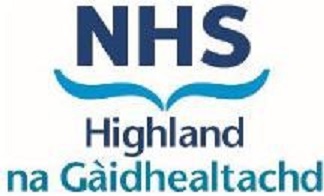Following thrombolysis, patients should be stepped down to unfractionated heparin (UFH) or treatment dose low molecular weight heparin (LMWH). This decision should be based on clinical response to thrombolysis, and individual bleeding risk. UFH should only be administered in level 2 or 3 settings.
Step down to unfractionated heparin (UFH) for 24 – 48 hrs
If the patient has had LMWH within the previous 12 hours:
- DO NOT give a bolus dose, but commence UFH via continuous infusion.
- Prescribe on the “Unfractionated Heparin (UFH) Prescription Chart for Intravenous (IV) Infusion", available in critical care areas.
- Ensure UFH is also prescribed on the Kardex, “as per chart” or via the placeholder on HEPMA "HEPARIN Infusion - AS PER PAPER CHART".
- The suggested dose is 18 units/kg/hour but doses are weight banded on the prescribing chart for ease of use.
If the patient has NOT had LMWH within the previous 12 hours:
- Give a bolus dose of UFH 75 units/kg over 3 to 5 minutes. Doses are weight banded on the prescribing chart for ease of use.
- Prescribe on the “Unfractionated Heparin (UFH) Prescription Chart for Intravenous (IV) Infusion”, available in critical care areas.
- Ensure UFH is also prescribed on the Kardex, “as per chart” or via the placeholder on HEPMA "HEPARIN Infusion - AS PER PAPER CHART".
- Immediately following the bolus dose, commence UFH via continuous infusion.
Monitoring whilst on UFH
- Check APTT ratio 4 hours after commencing UFH and adjust dose as per Unfractionated (UF) Heparin Prescription Chart for Intravenous (IV) Infusion.
- Check APTT ratio 4 hours after any adjustment is made to the infusion rate.
- Once stable, check APTT ratio 12 hourly during treatment.
Step down to LMWH
Enoxaparin is the LMWH of choice in NHS Highland. The first dose of enoxaparin should be given immediately post thrombolysis, unless there are any immediate signs of bleeding. If patients were already prescribed treatment dose enoxaparin prior to thrombolysis, check dosing below, and restart LMWH.
Criteria
|
Enoxaparin dose
|
| CrCl ≥ 30mL/min AND low risk of recurrence |
1.5mg/kg once daily by SC injection |
| CrCl ≥ 30mL/min AND additional risk factors e.g. obesity, cancer, recurrent VTE, symptomatic PE |
1mg/kg twice daily (12 hourly) by SC injection
|
| CrCl < 30mL/min |
1mg/kg once daily by SC injection |
The maximum single dose of enoxaparin is 120mg. In patients who weigh >120kg, start with 120mg every 12 hours (provided CrCl ≥ 30mL/min), and seek specialist haematology advice +/- monitoring of factor Xa levels.
Step down to oral therapy
When stepping down from UFH to apixaban, stop the continuous infusion and give the first dose of apixaban at the same time.
When stepping down from treatment dose LMWH to apixaban, give apixaban at the next scheduled dose of LMWH. Do NOT give LMWH at the same time and ensure LMWH is discontinued on the Kardex or HEPMA.
More detailed information on anticoagulant switching is available: Anticoagulant switching | Right Decisions
For more details on apixaban prescribing, see section “Direct oral anticoagulants”
